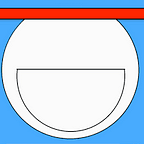Back-end Performance, Those Metrics We Should Care About
This article is translated from tmq.qq.com (Tencent Mobile Quality Center)
One dark night, an O2O taxi service provider, ‘X’, put out their new discount deals online. The campaign was a bit too successful for the back-end servers and the requests deluge crashed the query suggestion service (QSS). After the incident, the dev and op teams had a joint meeting and decided to thoroughly investigate the capacity of the service ASAP!
The challenge we have to undertake the task is to come up with the answers to the following questions, 1) for this particular type of service (QSS), what are the vital performance metrics? 2) what are their implications? and 3) what is the performance test pass criteria?
In this case study, we firstly discuss the performance metrics we care about in general basis. Then we benchmark QSS for real, and complete the circle by providing the in practice solution based on the analysis.
Abstract
The Hamlets appears differently in the views of two different groups of people, the API users (i.e., ‘X’, the O2O taxi service platform) and the resource owner (i.e., us). ‘X’ can only see external metrics such as throughput, latency and error rate. While as resource owner, we also have to take account of internal metrics and factors…
